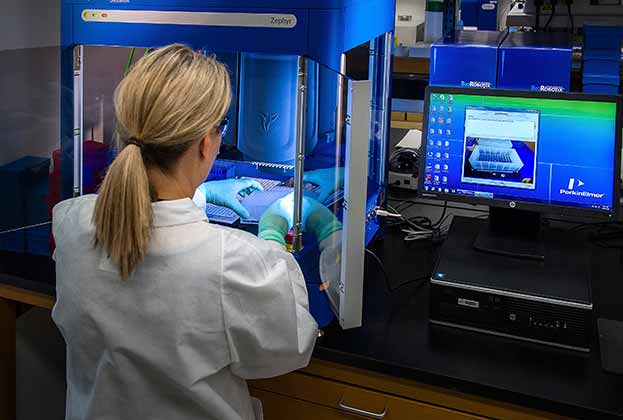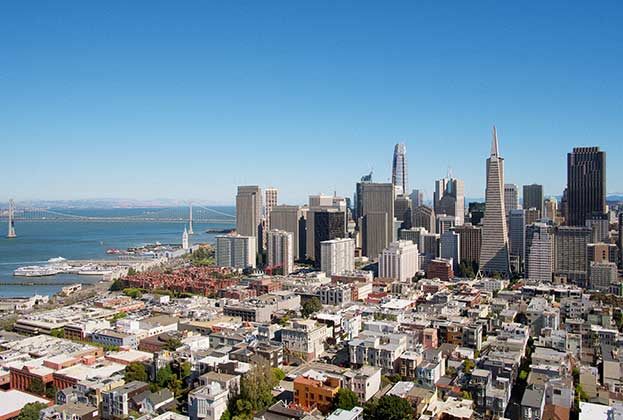Using data in a smart way to highlight the future growth locations
As the life sciences sector continues to evolve, understanding the fundamental attractiveness of locations is paramount to ensure the long-term return on investment.
Our methodology goes beyond traditional factors, encompassing around 60 metrics across talent, innovation, industrial output, investment, occupier activity, and social infrastructure
Sarah Thorley, Associate Director, Savills
We have undertaken detailed benchmarking of key life science hotspots across Europe for their attractiveness to life science occupiers. Our methodology goes beyond traditional factors, encompassing around 60 metrics across talent, innovation, industrial output, investment, occupier activity, and social infrastructure. Dynamic weightings are applied to reflect the importance of individual metrics to the market attractiveness. The overall ranking supports the strong dominance of historical life science clusters, including Lausanne – Geneva and the Zurich region in Switzerland, Paris in France, London in the United Kingdom, and the Randstad region in the Netherlands.
The ranking also highlights emerging locations in which the sector is growing rapidly, and investors are following a development-led strategy due to the lack of purpose-built stock, whereas, in the more established locations, there are some opportunities to reposition existing repriced office stock (subject to technical capability).
Berlin, the German capital city, is a growing life science hotspot, ranking 6th, just below major mature markets, as mentioned above. As the best life science market in Germany, Berlin narrowly outperformed other German locations, including Munich, Frankfurt-Karlsruhe, and Hamburg, in terms of the industrial output and investment activities. Yet, challenges exist to attract occupiers in the urban locations from more peripheral areas. Investors will be monitoring the capital markets situation in Berlin to gain exposure to assets with a credible repositioning angle in strong locations at a rebased pricing level. Savills has witnessed some specialist operators emerging in Germany, and we expect to see an increase in dedicated management solutions.
Another growing market that has attracted great investor attention is Copenhagen, which falls within the Top 10 list. Copenhagen has a strong concentration of life science companies, hosting 75% of the total number in Denmark. Furthermore, nearly 60% of Copenhagen’s life science companies are within the core science and innovation industry. The Maersk Tower in Copenhagen, designed by C.F. Møller, is a landmark development in central Copenhagen that optimises public/private partnerships. As the capital continues to support these partnerships, we expect to see opportunities for further science-focused real estate development.
Given the current economic headwinds, less established markets are facing challenges in respect of the funding environment
Sarah Thorley, Associate Director, Savills
We have further segmented our metrics to evaluate attractiveness from two crucial perspectives: talent and capital. The talent metrics focus on whether a location is attractive to a company and to their employees, such as quality of life, cost of living and scientist salaries, whilst the capital metrics focus on the investment volumes into the life science sector, and life science occupier dynamics within the market.
The Randstad region (including Amsterdam, Leiden, Rotterdam and Utrecht) in the Netherlands ranks the top regarding the talent attractiveness thanks to its exceptional quality of life. People living in Randstad have reported a high purchasing power, low average property price-to-income ratio and low traffic commute time with abundant entertainment facilities for after-work activities. Madrid comes in second place, outperforming other established markets for its low cost of living and a high number of science professional job posts. Despite being a nascent market, there is still demand for lab-enabled real estate as evidenced at Madrid Science Innovation District (MASID), which is actively leasing incubator and scale space to biotech tenants.
Given the current economic headwinds, less established markets are facing challenges in respect of the funding environment and much of the capital into the sector is being concentrated in more established locations.
Paris is home to over 1,000 life science companies across various scientific subsectors, with around 70 global pharmaceutical companies that have more than 10,000 employees across the world. As the top market with the highest number of investment deals, Paris has raised over 500 life science funding deals in the past 30 years, totalling at around €10bn, with over 64% raised in the last five years. With incubators in the region operating at full capacity and given the limited pipeline of purpose-built developments in the Greater Paris region, we expect to see strong rental growth over the near term. London also shows strong capital attractiveness, with over €10bn of capital raised over time and a total number of around 1,300 life science companies in the market.
As shown from the chart above, markets with higher talent attractiveness are located to the right and markets with higher capital attractiveness are located to the top. Thus, markets with higher overall ranking are generally located at the top right corner.
It is noticeable that Warsaw in Poland shows fairly strong capital and talent attractiveness. Yet, it ranks significantly lower than the yellow circle (Top 11–25) that it falls within, at the 36th place. One of the key reasons is the weakness in the innovation metrics for Warsaw, which is not included in the graph. Due to the lack of specialist hospitals and life science universities acting as the anchors of life science activities, it is difficult for Warsaw to generate scientific outputs and transform them into industrial outputs via academic-industry collaboration. This is a similar story to other secondary markets across Europe like Cork in Ireland, which is poised to grow due to a historic concentration of big pharma in the city attracted by local incentives.
Read the articles within Spotlight: Life Sciences – Trends & Outlook below.
.jpg)

.jpg)




.jpg)